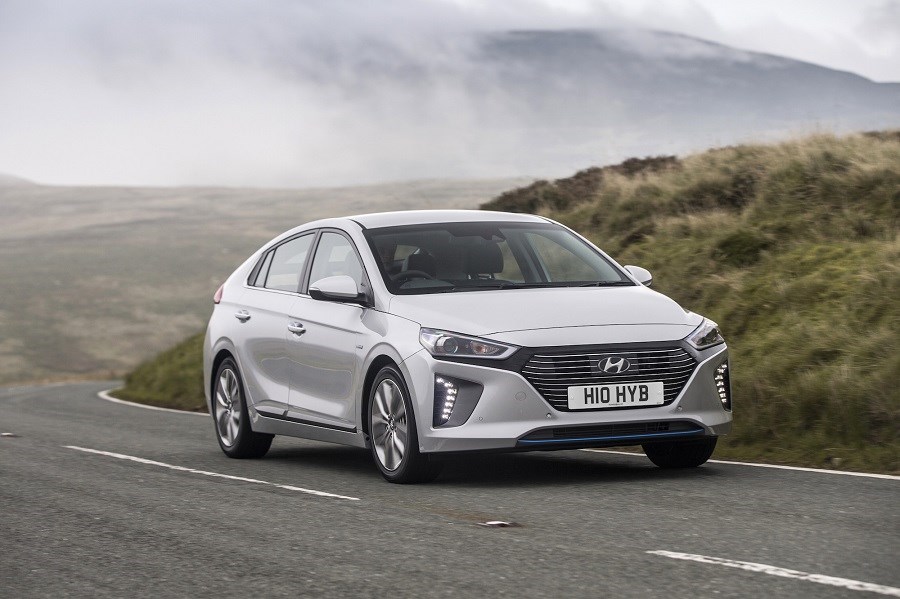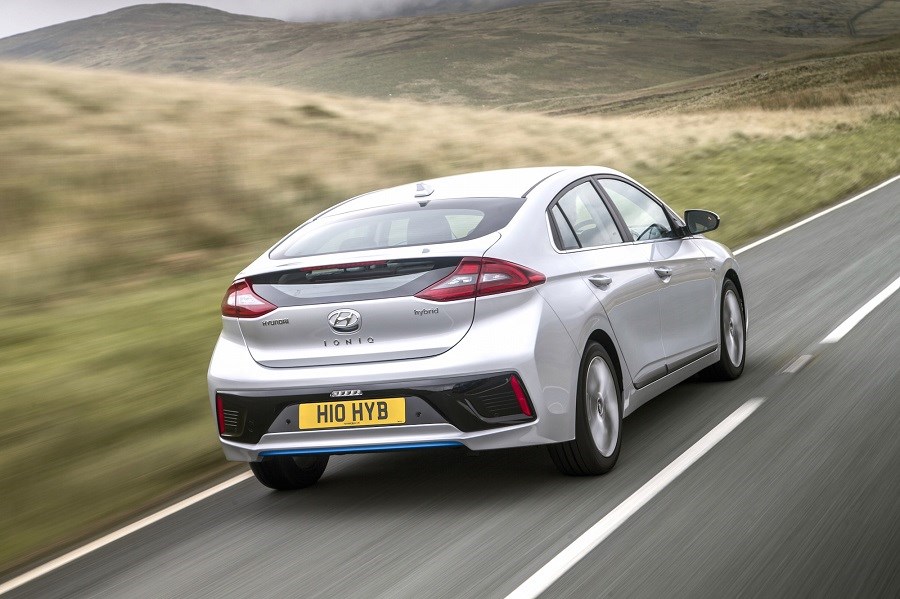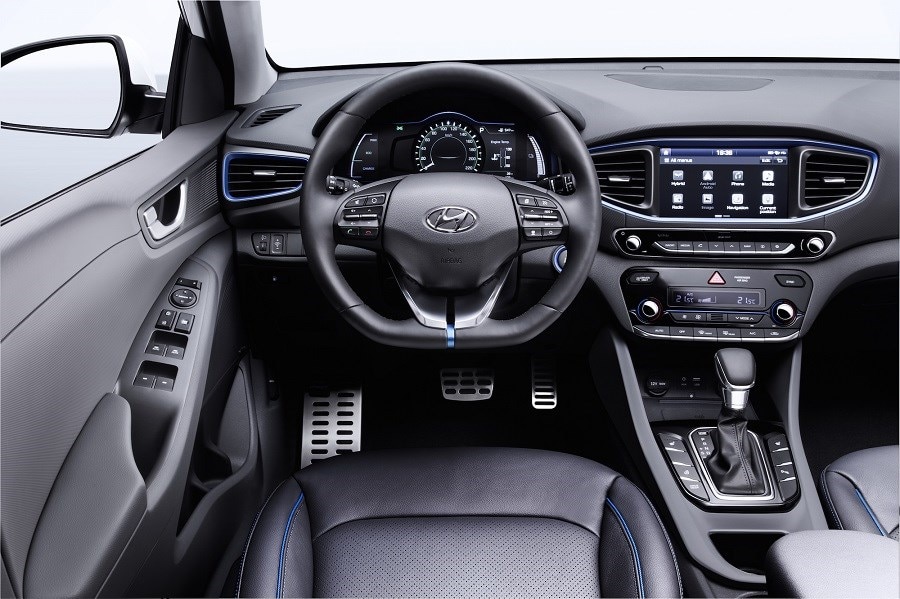Space and practicality
Despite its unconventional powertrain, the Ioniq is a traditional hatchback, which means there are good amounts of space for all passengers, both front and rear.
In the front, the driver has enough seat and wheel adjustment for people of most sizes to get comfortable, although extra-tall drivers may wish there was an extra ratchet of adjustment on the seat sliding mechanism.
The car also gets plenty of stowage space, with door bins big enough to swallow 1.5-litre bottles and cup holders between the front seats.
In the rear, leg room isn’t the best-in-class, but it’s far from dreadful. The location of battery pack in electric and PHEV models means the rear bench can’t be moved, limiting the designers’ options, yet it still has sufficient accommodation for two fully grown adults.
Although the back seat can’t be moved, it does split 60/40, adding flexibility to the boot’s standard 443-litre capacity, though the battery pack and hybrid system does mean that the load bay is quite shallow.
Interior build quality and finish is good, proving just how far the Koreans have come in recent years in terms of fit and finish, though there are still a few examples of hard shiny plastics, most notably on the switches for the electric windows and door mirrors.
Ergonomically, the layout is good, with a large touchscreen capable of mirroring smartphones via Apple CarPlay and Android Auto dominating the centre console.
Engines
The 1.6-litre GDI petrol engine in the Ioniq runs what’s known as an Atkinson Cycle, which is an established way of increasing efficiency thanks to a short compression and long expansion stroke. In layman’s terms, what that means is it puts fuel into the engine more slowly and maximises the time it burns it for, which is good for efficiency but not for performance.
The engine was designed by Hyundai-Kia specifically for use in its hybrid models, where the instant torque of the hybrid drive train, which always retains residual charge thanks to regenerative braking, helps aid the engine’s acceleration in a manner not dissimilar to the KERS system used in Formula One, where kinetic energy recovered by the car can be used to give it an acceleration boost.
With this technology on board, Hyundai can afford for the engine to run efficiently rather than responsively, as the hybrid system more than compensates for any delay in power delivery. It’s clever stuff.
On its own, the 1.6-litre engine delivers 103bhp, but the hybrid set-up offers an extra 40bhp on demand, giving an equivalent power output of 143bhp, which is more or less on a par with most petrol cars of a similar size.
Things to look for
The Ioniq has so far proven very reliable in both hybrid and PHEV formats, with no notable problems. The standard car benefits from Hyundai’s standard five-year, 100,00-mile warranty, while the battery pack is backed by a 10-year, 180,000-mile supplementary warranty.


